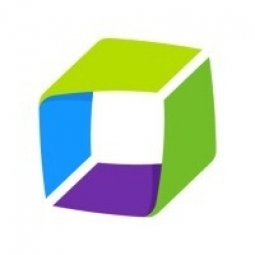Technology Category
- Infrastructure as a Service (IaaS) - Hybrid Cloud
- Sensors - Temperature Sensors
Applicable Industries
- Cement
- Retail
Applicable Functions
- Maintenance
- Product Research & Development
Use Cases
- Construction Management
- Infrastructure Inspection
Services
- Cloud Planning, Design & Implementation Services
About The Customer
Kroger is the largest supermarket chain in the United States, boasting nearly 2,800 stores across 35 states. The company serves approximately 9 million customers daily and generated a revenue of $121.2 billion in 2019. Despite its extensive physical presence, Kroger had a limited digital footprint about five years ago. To address this, the company underwent an aggressive digital transformation, moving to a hybrid, multicloud environment comprising Microsoft Azure, Google Cloud Platform, and on-premises infrastructure. This move, while necessary, introduced significant complexity into Kroger's IT stack, necessitating a more sophisticated approach to IT monitoring and management.
The Challenge
Kroger, the largest supermarket chain in the United States, embarked on an aggressive digital transformation about five years ago to enhance its limited digital presence. This transformation led to a shift to a hybrid, multicloud environment, incorporating Microsoft Azure, Google Cloud Platform, and on-premises infrastructure. Consequently, Kroger's IT stack became increasingly dynamic and complex, making it challenging to monitor and manage. The company identified a need for greater observability into its environment to ensure its digital teams could access the insights they needed to deliver seamless digital experiences to customers. Additionally, Kroger's monitoring team, known as the 'Captain America Truth and Justice' team, sought to establish a common language for problem resolution to expedite the process.
The Solution
To address these challenges, Kroger adopted Dynatrace, a solution capable of handling the complexity of its hybrid, multicloud environment and future-proofed for new platforms. Dynatrace's AI and automation capabilities automatically instrument Kroger's entire hybrid, multi-cloud environment, processing billions of dependencies in real-time. This provides the full-stack observability and precise answers that Kroger's teams need to maintain seamless digital experiences for its customers. Dynatrace's automation capabilities provide Kroger with out-of-the-box observability into its dynamic cloud environment. Its single agent approach means Dynatrace can automatically discover and instrument all application and infrastructure components across Kroger's hybrid, multicloud ecosystem, eliminating blind spots and avoiding the need for multiple tools and agents. Furthermore, Dynatrace's AI-assistance eliminates false positives and offers Kroger precise answers and code-level insights into system degradation or performance anomalies, prioritized by business impact.
Operational Impact
Quantitative Benefit

Case Study missing?
Start adding your own!
Register with your work email and create a new case study profile for your business.
Related Case Studies.

Case Study
System 800xA at Indian Cement Plants
Chettinad Cement recognized that further efficiencies could be achieved in its cement manufacturing process. It looked to investing in comprehensive operational and control technologies to manage and derive productivity and energy efficiency gains from the assets on Line 2, their second plant in India.

Case Study
Improving Production Line Efficiency with Ethernet Micro RTU Controller
Moxa was asked to provide a connectivity solution for one of the world's leading cosmetics companies. This multinational corporation, with retail presence in 130 countries, 23 global braches, and over 66,000 employees, sought to improve the efficiency of their production process by migrating from manual monitoring to an automatic productivity monitoring system. The production line was being monitored by ABB Real-TPI, a factory information system that offers data collection and analysis to improve plant efficiency. Due to software limitations, the customer needed an OPC server and a corresponding I/O solution to collect data from additional sensor devices for the Real-TPI system. The goal is to enable the factory information system to more thoroughly collect data from every corner of the production line. This will improve its ability to measure Overall Equipment Effectiveness (OEE) and translate into increased production efficiencies. System Requirements • Instant status updates while still consuming minimal bandwidth to relieve strain on limited factory networks • Interoperable with ABB Real-TPI • Small form factor appropriate for deployment where space is scarce • Remote software management and configuration to simplify operations

Case Study
Digital Retail Security Solutions
Sennco wanted to help its retail customers increase sales and profits by developing an innovative alarm system as opposed to conventional connected alarms that are permanently tethered to display products. These traditional security systems were cumbersome and intrusive to the customer shopping experience. Additionally, they provided no useful data or analytics.

Case Study
How Sirqul’s IoT Platform is Crafting Carrefour’s New In-Store Experiences
Carrefour Taiwan’s goal is to be completely digital by end of 2018. Out-dated manual methods for analysis and assumptions limited Carrefour’s ability to change the customer experience and were void of real-time decision-making capabilities. Rather than relying solely on sales data, assumptions, and disparate systems, Carrefour Taiwan’s CEO led an initiative to find a connected IoT solution that could give the team the ability to make real-time changes and more informed decisions. Prior to implementing, Carrefour struggled to address their conversion rates and did not have the proper insights into the customer decision-making process nor how to make an immediate impact without losing customer confidence.

Case Study
Ensures Cold Milk in Your Supermarket
As of 2014, AK-Centralen has over 1,500 Danish supermarkets equipped, and utilizes 16 operators, and is open 24 hours a day, 365 days a year. AK-Centralen needed the ability to monitor the cooling alarms from around the country, 24 hours a day, 365 days a year. Each and every time the door to a milk cooler or a freezer does not close properly, an alarm goes off on a computer screen in a control building in southwestern Odense. This type of alarm will go off approximately 140,000 times per year, equating to roughly 400 alarms in a 24-hour period. Should an alarm go off, then there is only a limited amount of time to act before dairy products or frozen pizza must be disposed of, and this type of waste can quickly start to cost a supermarket a great deal of money.








